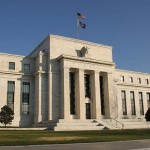On Monday (in GMT terms) gold for delivery in December traded within the range of $1,353.2-$1,361.9. Futures closed at $1,359.6, edging up 0.15% compared to Friday’s close. It has been the 145th gain in the past 306 trading days and also a fifth consecutive one. The commodity has gone up 0.15% so far in August, after soaring 2.86% in July.
On the Comex division of the New York Mercantile Exchange, gold futures for delivery in December were edging up 0.48% on Tuesday to trade at $1,366.1 per troy ounce. The precious metal went up as high as $1,367.3 during early European trade, or a level unseen since July 11th, while the current daily low was at $1,353.7 per troy ounce, recorded during the early phase of the Asian trading session.
The US Dollar Index, a gauge reflecting the relative strength of the greenback against a basket of 6 other major currencies, was edging down 0.36% on the day at a level of 95.41, after going down as low as 95.38 earlier. On July 29th the index tumbled to 95.33, or its lowest level since June 24th. The gauge has dipped 0.06% so far during the current month, following a 0.70% retreat in July.
During Tuesdays Asian session, gold futures advanced sharply after at its policy meeting the Reserve Bank of Australia (RBA) decided to axe the official cash rate by 25 basis points to a new all-time low of 1.50%. This has been the second time this year, when the central bank cut borrowing costs.
According to extracts from the statement offered by RBA Governor, Glenn Stevens: “Recent data confirm that inflation remains quite low. Given very subdued growth in labour costs and very low cost pressures elsewhere in the world, this is expected to remain the case for some time.”
“Low interest rates have been supporting domestic demand and the lower exchange rate since 2013 is helping the traded sector. Financial institutions are in a position to lend for worthwhile purposes. These factors are all assisting the economy to make the necessary economic adjustments, though an appreciating exchange rate could complicate this.”
“Taking all these considerations into account, the Board judged that prospects for sustainable growth in the economy, with inflation returning to target over time, would be improved by easing monetary policy at this meeting.”
Today gold trading may be strongly influenced by the monthly report on personal spending, income and PCE inflation in the United States. Personal spending in the United States probably rose 0.3% in June, according to market expectations, while personal income was probably up for a 15th consecutive month in June, increasing at a monthly rate of 0.4%. At the same time, the Core PCE Price Index, the preferred measure of inflation by the Federal Reserve, probably rose 1.6% year-on-year in June, according to expectations, or matching the rate of increase reported in the previous three months. On a monthly basis, the Core PCE Price Index probably increased for a sixth consecutive month in June, going up 0.1%, according to analyst projections. Lower rates of increase would have a moderate bearish effect on the US dollar and a moderate bullish effect on the yellow metal, because of the lower probability of a rate hike by the Federal Reserve Bank.
According to CME’s FedWatch Tool, as of August 1st, market players saw an 18.0% chance of a rate hike occurring at the Federal Reserve’s policy meeting in September, up from 12.0% in the prior business day, and a 19.7% chance of a hike in November, up from 12.0% during the preceding day. As far as the December meeting is concerned, the probability of such a move was seen at 42.7% on August 1st, up from 33.0% in the preceding business day.
Meanwhile, silver futures for delivery in September were advancing 0.59% on the day to trade at $20.620 per troy ounce, after going up as high as $20.640 a troy ounce during the early phase of the European trading session.
Daily, Weekly and Monthly Pivot Levels
By employing the Camarilla calculation method, the daily levels of importance for gold are presented as follows:
R1 – $1,360.4
R2 – $1,361.2
R3 (Range Resistance – Sell) – $1,362.0
R4 (Long Breakout) – $1,364.4
R5 (Breakout Target 1) – $1,367.2
R6 (Breakout Target 2) – $1,368.3
S1 – $1,358.8
S2 – $1,358.0
S3 (Range Support – Buy) – $1,357.2
S4 (Short Breakout) – $1,354.8
S5 (Breakout Target 1) – $1,352.0
S6 (Breakout Target 2) – $1,350.9
By using the traditional method of calculation, the weekly levels of importance for gold are presented as follows:
Central Pivot Point – $1,346.3
R1 – $1,373.2
R2 – $1,389.0
R3 – $1,415.9
R4 – $1,442.9
S1 – $1,330.5
S2 – $1,303.6
S3 – $1,287.8
S4 – $1,272.1
In monthly terms, for the yellow metal we have the following pivots:
Central Pivot Point – $1,348.5
R1 – $1,386.5
R2 – $1,415.4
R3 – $1,453.4
R4 – $1,491.4
S1 – $1,319.5
S2 – $1,281.5
S3 – $1,252.6
S4 – $1,223.6





